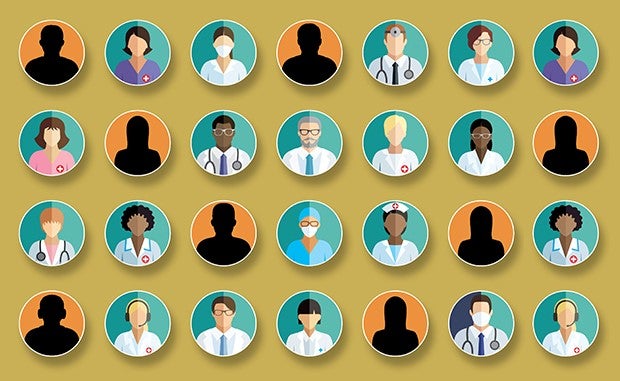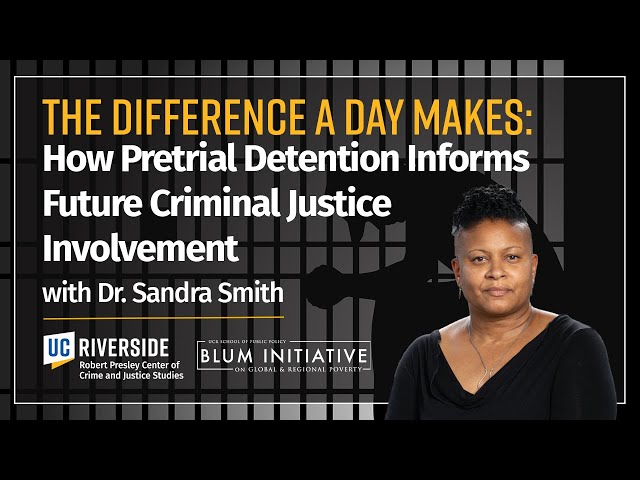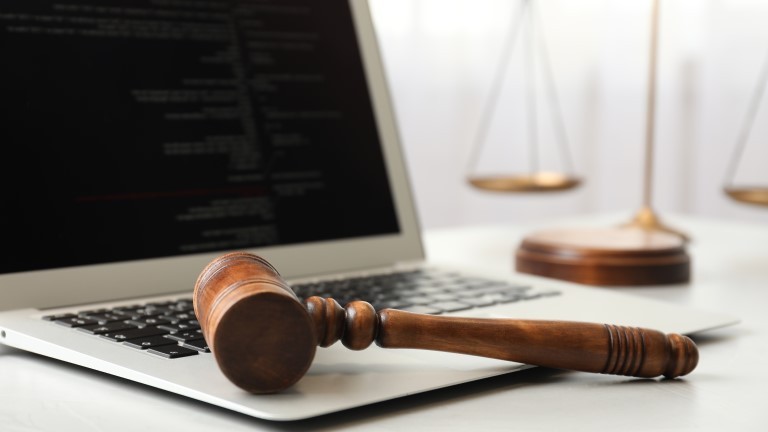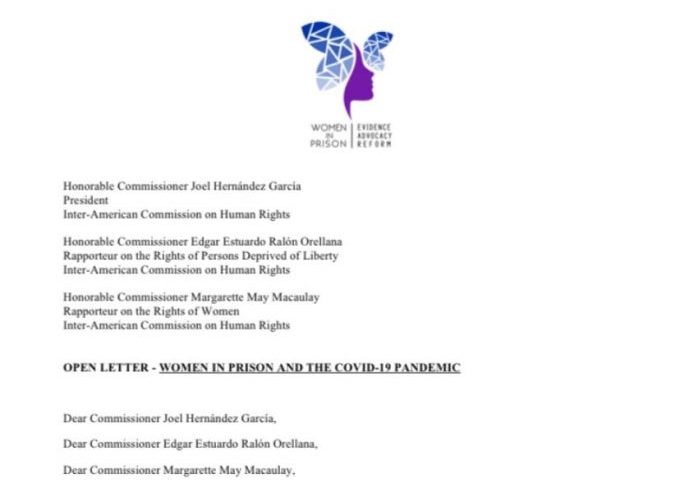Table of Contents
The COVID-19 pandemic brought unprecedented challenges to various sectors of society, and American jails were no exception. As the virus spread rapidly, jails across the nation faced significant hurdles in managing their inmate populations while safeguarding the health and safety of both inmates and staff. This article explores the multifaceted impact of COVID-19 on American jails, the lessons learned, and the reforms that have emerged as a response to this crisis.
The COVID-19 pandemic brought unprecedented challenges to various sectors of society, and American jails were no exception. As the virus spread rapidly, jails across the nation faced significant hurdles in managing their inmate populations while safeguarding the health and safety of both inmates and staff.
In this critical juncture, the pandemic shed light on several key issues within the criminal justice system. Firstly, it highlighted the vulnerability of incarcerated individuals to communicable diseases due to overcrowding, inadequate healthcare, and limited access to sanitation measures. As outbreaks surged within jails, there was an urgent need to rethink how we approach public health in correctional facilities.
Furthermore, the pandemic exposed the critical importance of addressing racial and socioeconomic disparities in the justice system. Communities of color and economically disadvantaged individuals were disproportionately affected by COVID-19, both inside and outside jail walls. This underscored the need for equitable access to healthcare, legal representation, and social support services.
The challenges posed by COVID-19 forced jails to adapt rapidly. New protocols for screening, testing, and isolating infected individuals were implemented. Telemedicine and virtual court hearings became essential tools for minimizing physical contact. Pretrial release and diversion programs were expanded to reduce jail populations and mitigate the risk of outbreaks.
The pandemic also prompted a reevaluation of the use of solitary confinement and the conditions of confinement for inmates, leading to calls for more humane and rights-based practices. It underscored the urgency of providing mental health support and addiction treatment within correctional facilities.
As we reflect on the multifaceted impact of COVID-19 on American jails, it becomes evident that this crisis served as a catalyst for change. Lessons learned from the pandemic have spurred important reforms aimed at creating a more resilient, equitable, and health-conscious criminal justice system. These reforms encompass public health improvements, decarceration initiatives, and a renewed commitment to addressing the root causes of incarceration.
In conclusion, while the challenges posed by the COVID-19 pandemic were immense, they also presented an opportunity for positive transformation within the American criminal justice system. The lessons learned and the reforms that have emerged in response to this crisis have the potential to reshape the landscape of American jails, ultimately leading to a more just and compassionate approach to incarceration and public safety.
Overcrowding and Social Distancing
Jails, often operating above their intended capacity, struggled to implement social distancing measures, as cramped living conditions made it challenging to contain the spread of the virus.
null
Healthcare Access
Providing adequate healthcare services to inmates became a critical concern, particularly as many inmates have underlying health conditions that make them more vulnerable to severe COVID-19 outcomes.
The provision of adequate healthcare services to inmates has not only become a critical concern but also a moral imperative, especially in the context of the COVID-19 pandemic. In this challenging environment, addressing the unique healthcare needs of incarcerated individuals, many of whom have preexisting health conditions, is essential for their well-being and for safeguarding public health. Let’s delve deeper into this idea:
Protecting Vulnerable Populations: The COVID-19 pandemic has underscored the vulnerability of inmates with underlying health conditions. These individuals are at a significantly higher risk of severe illness or death if infected, making it imperative to prioritize their healthcare needs as a matter of both human rights and public health.
Preventing Outbreaks: Inadequate healthcare in correctional facilities can lead to the rapid spread of infectious diseases, including COVID-19. Adequate medical care, timely testing, and contact tracing within jails are crucial to preventing outbreaks not only among inmates but also among staff and the broader community.
Humanitarian Responsibility: Providing healthcare to inmates is a humanitarian responsibility. Regardless of their legal status, inmates deserve access to medical services that meet acceptable standards of care. Neglecting their healthcare needs not only violates their rights but also goes against principles of basic decency and compassion.
Reducing Strain on Hospitals: Adequate healthcare within jails helps alleviate the burden on external healthcare systems. Without proper medical care within correctional facilities, inmates with severe health issues may need to be transported to hospitals, straining healthcare resources in the community.
Rehabilitation and Reentry: Access to healthcare services is integral to an inmate’s rehabilitation journey. Many individuals will eventually rejoin society, and addressing their health needs while incarcerated contributes to their ability to reintegrate successfully and lead healthier lives upon release.
Telemedicine and Technology: The pandemic has accelerated the adoption of telemedicine in correctional facilities. Telehealth services can facilitate timely medical consultations, mental health support, and follow-up care while minimizing in-person contact and reducing transmission risks.
Mental Health Care: In addition to physical health, mental health care is essential for inmates. The stresses of incarceration, exacerbated by the pandemic, can lead to increased mental health issues. Access to counseling, therapy, and psychiatric services is critical for addressing these challenges.
Preventative Measures: Beyond responding to acute health crises, correctional facilities should implement preventative measures, such as vaccination campaigns, hygiene protocols, and health education, to protect inmates from COVID-19 and other communicable diseases.
Community Protection: Providing adequate healthcare to inmates is not just about their well-being but also about protecting the community. Inmates who receive appropriate medical care are less likely to carry diseases back to their communities upon release, contributing to public health and safety.
Legal and Ethical Obligations: Correctional systems have legal and ethical obligations to provide healthcare to inmates. These obligations are enshrined in international human rights standards, national laws, and court rulings, emphasizing the importance of upholding these rights.
In conclusion, ensuring that inmates have access to adequate healthcare services, especially during the challenges posed by the COVID-19 pandemic, is essential for both ethical and practical reasons. It not only protects vulnerable populations within correctional facilities but also helps safeguard public health, reduces strain on external healthcare systems, and contributes to the overall goal of rehabilitation and successful reentry into society.
Staffing Shortages
Jails experienced staffing shortages due to illness, quarantine requirements, and burnout among correctional officers. This further strained the ability to maintain security and provide essential services.
The staffing shortages experienced by jails during times of illness, quarantine requirements, and correctional officer burnout represent a critical challenge that goes beyond mere personnel numbers. This issue has multifaceted implications for both the welfare of inmates and the effective functioning of the correctional system:
Increased Vulnerability: Shortages in correctional staff can lead to increased vulnerability for inmates, as reduced supervision can create opportunities for violence, contraband smuggling, and disruptions within the facility. Ensuring inmate safety becomes a paramount concern when staffing levels are stretched thin.
Impact on Rehabilitation: Adequate staffing is essential for the successful implementation of rehabilitation and reintegration programs. Insufficient personnel can limit inmates’ access to educational, vocational, and counseling services, hindering their prospects for personal growth and reform.
Escalating Stress Levels: Burnout among correctional officers is a critical concern. These professionals are exposed to high-stress environments daily, and extended periods of overwork can result in decreased job satisfaction, emotional exhaustion, and a higher risk of turnover. The mental health and well-being of correctional staff deserve attention to ensure their continued effectiveness and job satisfaction.
Operational Challenges: Maintaining order and security within correctional facilities becomes increasingly challenging with staff shortages. Correctional officers often perform a wide range of tasks, from conducting security checks to responding to emergencies. When resources are limited, it can be difficult to meet these demands effectively.
Resource Allocation: Jails must allocate resources strategically to compensate for staffing shortages. This may involve reallocating officers from other areas, increasing overtime, or implementing temporary measures that may not be sustainable in the long run. These decisions can have financial and logistical implications for the institution.
Public Safety Concerns: Shortages in jail staffing can also have implications for public safety. If inmates are not adequately supervised or if essential services are compromised, there is a risk that individuals with violent tendencies may not receive the necessary interventions and support, potentially posing risks to society upon release.
Long-Term Solutions: Addressing staffing shortages in correctional facilities requires a multi-pronged approach. This includes investing in the recruitment and training of correctional officers, offering mental health support and resources to staff, and exploring innovative solutions such as technology to enhance security and operational efficiency.
In conclusion, the staffing shortages experienced by jails have significant and wide-ranging consequences. Balancing the need for security, rehabilitation, and the well-being of both inmates and staff is a complex challenge. It necessitates ongoing efforts to recruit, train, and support correctional officers while exploring creative solutions to enhance efficiency and maintain the essential functions of the correctional system. Ultimately, addressing these staffing issues is critical for ensuring the safety and effectiveness of the entire criminal justice system.

Pretrial Detention
Concerns arose over pretrial detainees, who made up a significant portion of the jail population. Many were held simply because they could not afford bail, creating a risk of virus transmission within the jail.
The concerns that emerged regarding pretrial detainees within the jail population were both urgent and multifaceted. A significant portion of individuals behind bars were awaiting their day in court, their lives in limbo due to an inability to afford bail. This situation not only raised issues of fundamental fairness and justice but also became a critical public health concern, particularly during the outbreak of a contagious virus.
First and foremost, the practice of detaining individuals solely because they couldn’t afford bail raised serious questions about the principles of equal treatment under the law. It seemed to create a two-tiered system of justice, one for those with the financial means to secure their release and another for those without. This financial barrier to freedom not only infringed upon the presumption of innocence until proven guilty but also disproportionately affected marginalized communities who were less likely to have the means to post bail.
Moreover, the overcrowding resulting from the high number of pretrial detainees amplified the risk of virus transmission within the jail. In such close quarters, maintaining social distancing and implementing proper sanitation measures proved extremely challenging. The consequences of an outbreak within a correctional facility extended beyond the walls of the jail, as staff, visitors, and inmates who might later be released into the community were all potential vectors for the virus.
To address these concerns, many jurisdictions began reevaluating their pretrial detention policies. Some implemented measures to reduce the reliance on cash bail, opting for risk assessments to determine whether individuals posed a flight risk or a danger to the community. These assessments aimed to make release decisions based on factors other than financial means, fostering a more equitable and evidence-based approach to pretrial detention.
Additionally, the pandemic accelerated the adoption of technology for remote court proceedings and electronic monitoring, allowing non-violent pretrial detainees to be released under supervision while awaiting trial. These measures not only alleviated the overcrowding issue but also preserved the health and safety of those within the correctional system.
In conclusion, the concerns surrounding pretrial detainees and the risk of virus transmission within jails highlighted the need for a more just and pragmatic approach to criminal justice. It underscored the importance of reevaluating bail practices and promoting alternatives to incarceration for individuals who pose minimal risks to society. Ultimately, these efforts aimed not only to address immediate public health concerns but also to strengthen the principles of fairness and equality within the justice system.

Mental Health Impact
The pandemic had a significant mental health impact on both inmates and staff, exacerbating existing mental health challenges and causing new ones due to isolation and uncertainty.
nullNeed for Decarceration
The pandemic underscored the need for decarceration, particularly for non-violent offenders and those at low risk of flight or reoffending. Reducing the jail population became a priority to facilitate social distancing and protect vulnerable individuals.
The pandemic underscored the need for decarceration, particularly for non-violent offenders and those at low risk of flight or reoffending. Reducing the jail population became a priority to facilitate social distancing and protect vulnerable individuals. This critical response to the public health crisis revealed several important considerations and potential long-term impacts:
Public Health and Safety: Decarceration during the pandemic was not only about safeguarding incarcerated individuals but also protecting the broader community. Reducing the jail population helped mitigate the spread of COVID-19 within correctional facilities, reducing the risk of outbreaks that could overwhelm local healthcare systems.
Reevaluation of Bail Systems: The pandemic prompted a reevaluation of bail systems, with many jurisdictions temporarily suspending or modifying bail requirements for certain non-violent offenses. This reexamination led to discussions about the equity and effectiveness of bail practices in the criminal justice system.
Alternatives to Incarceration: Decarceration efforts highlighted the importance of alternatives to incarceration, such as electronic monitoring, community service, and diversion programs. These alternatives can help address the root causes of criminal behavior while minimizing the reliance on jail sentences.
Racial and Socioeconomic Disparities: The pandemic emphasized the racial and socioeconomic disparities within the criminal justice system. Communities of color and economically disadvantaged individuals were disproportionately affected by both the virus and preexisting issues related to incarceration.
Mental Health and Rehabilitation: Decarceration drew attention to the need for improved mental health and rehabilitation services, both inside and outside of correctional facilities. Many individuals with mental health issues were released during the pandemic, emphasizing the importance of adequate community-based support.
Reduction in Recidivism: By prioritizing decarceration for non-violent offenders, communities had an opportunity to observe the potential benefits of reducing the jail population. Lower recidivism rates among those who received support and rehabilitation rather than incarceration underscored the potential long-term benefits of alternative approaches.
Budgetary Implications: The pandemic-induced decarceration prompted discussions about the budgetary implications of maintaining large jail populations. Many jurisdictions found cost savings associated with reduced incarceration rates, leading to conversations about reallocating funds to support community-based initiatives.
Legal and Policy Reforms: In response to the pandemic, some jurisdictions implemented temporary legal and policy changes related to sentencing, parole, and compassionate release. These changes raised questions about the need for permanent reforms in the post-pandemic era.
Community Reintegration: Decarceration efforts emphasized the importance of comprehensive reentry support to ensure that individuals leaving jail could successfully reintegrate into society. Access to housing, employment, healthcare, and social services became crucial components of the reentry process.
Ongoing Advocacy: The success of decarceration efforts during the pandemic inspired ongoing advocacy for criminal justice reform. Community organizations, activists, and policymakers continue to push for changes that address the systemic issues highlighted by the pandemic, such as mass incarceration, racial disparities, and the treatment of non-violent offenders.
In conclusion, the pandemic accelerated discussions and actions related to decarceration, shining a spotlight on the need for comprehensive criminal justice reform. The experiences and lessons learned during this period have the potential to shape a more equitable, compassionate, and effective criminal justice system in the post-pandemic world.

Telehealth Services
Telehealth services became a valuable tool for providing medical and mental health care to inmates while minimizing in-person contact. This innovation may continue to be used to enhance healthcare access in jails.
Telehealth services have emerged as a transformative innovation within the realm of correctional healthcare, offering a beacon of hope for both incarcerated individuals and correctional facilities alike. The utilization of telehealth represents a significant step forward in the ongoing quest to provide effective medical and mental health care within the constraints of the penal system.
One of the most striking advantages of telehealth in correctional facilities is its ability to bridge the gap in healthcare access. Inmates often face significant logistical challenges in receiving timely medical attention, particularly when they need specialist care or consultations. Telehealth erases these barriers, as it enables remote consultations with medical professionals and mental health specialists. This not only expedites diagnosis and treatment but also ensures that individuals receive the care they need, when they need it, ultimately reducing the risk of exacerbated health conditions and medical emergencies.
Moreover, telehealth services promote the safety and well-being of both inmates and healthcare providers by minimizing in-person contact. This feature has proven especially vital during public health crises, such as the COVID-19 pandemic, when physical distancing measures are crucial to prevent the spread of infectious diseases. By reducing the need for in-person visits, telehealth mitigates the risk of disease transmission within correctional facilities, safeguarding the health of both inmates and staff.
Telehealth also holds immense potential in improving mental health services within jails. Incarcerated individuals often grapple with psychological distress and mental health conditions, exacerbated by the challenging environment of confinement. Teletherapy and remote mental health consultations offer a lifeline to inmates, providing access to counseling and treatment that can alleviate suffering and contribute to rehabilitation efforts.
As we look to the future, the continued use of telehealth in correctional facilities has the potential to revolutionize the way we approach healthcare within the criminal justice system. It not only addresses immediate health needs but also aligns with the broader goal of providing more humane and effective care to inmates. By harnessing the power of telehealth, we can ensure that incarcerated individuals receive the medical and mental health support they deserve while simultaneously enhancing the safety and operational efficiency of correctional facilities.
For a comprehensive look at this subject, we invite you to read more on this dedicated page: Patients, Families, and Communities COVID-19 Impact Assessment …
Enhanced Hygiene Measures
Improved hygiene practices and sanitation protocols are now standard in jails. Frequent handwashing, mask mandates, and increased cleaning have become crucial to preventing virus transmission.
The implementation of improved hygiene practices and stringent sanitation protocols within jails represents a fundamental shift in correctional facility management, particularly in response to the ongoing challenges posed by infectious diseases such as COVID-19.
Frequent handwashing, once a basic health recommendation, has become an integral part of daily life within jails. Inmates and staff alike are encouraged to practice rigorous hand hygiene to reduce the risk of virus transmission. This simple yet effective measure not only helps safeguard the health of those within the facility but also serves as an educational opportunity. Inmates learn about the importance of hygiene and can carry this knowledge with them into their communities upon release, contributing to public health beyond the jail walls.
Mask mandates have also become a vital component of infection control strategies in jails. In a confined environment, where physical distancing may be challenging, mask-wearing serves as a crucial barrier against the spread of airborne pathogens. By enforcing mask mandates, correctional facilities prioritize the well-being of their populations and reduce the risk of outbreaks, protecting both inmates and staff members.
Moreover, increased cleaning and sanitation efforts are now the norm. Correctional facilities have recognized the importance of thorough and regular cleaning practices in high-touch areas to minimize the risk of contamination. This not only addresses immediate health concerns but also promotes a cleaner and safer living environment for all inmates. Such practices can contribute to improved mental well-being and morale among incarcerated individuals.
The adoption of these hygiene and sanitation protocols represents a broader shift toward a more holistic approach to correctional care. It acknowledges that the health and safety of inmates are intertwined with the health and safety of the entire community. By instilling these practices within jails, we not only protect those within the system but also contribute to the larger goal of public health and disease prevention, bridging the gap between correctional facilities and the communities they serve.

Bail Reform
The pandemic accelerated discussions around bail reform, as many jurisdictions recognized the inequities of detaining individuals solely due to their inability to pay bail. Reforms aimed at reducing pretrial detention gained momentum.
nullAdditionally, you can find further information on this topic by visiting this page: Mass Incarceration: The Whole Pie 2023 | Prison Policy Initiative
Diversion Programs
Many jurisdictions implemented diversion programs to keep individuals out of jail and provide them with access to services such as mental health treatment and substance abuse counseling.
The implementation of diversion programs in various jurisdictions represents a significant and progressive shift in the criminal justice landscape. These programs are designed not only to reduce the burden on overcrowded jails but, more importantly, to address the underlying issues that often lead individuals into the criminal justice system in the first place.
One of the key facets of diversion programs is their emphasis on rehabilitation over punishment. Recognizing that many individuals involved in the justice system have complex needs, such as mental health challenges or substance use disorders, these programs aim to provide tailored solutions. Instead of a one-size-fits-all approach, diversion programs offer access to essential services like mental health treatment, substance abuse counseling, and social support.
By diverting individuals away from incarceration and into programs that address the root causes of their behavior, jurisdictions are taking a proactive approach to reducing recidivism. These programs recognize that punitive measures often fail to address the underlying issues that contribute to criminal conduct. In contrast, diversion programs seek to break the cycle of criminality by offering individuals the opportunity for personal growth, recovery, and rehabilitation.
Moreover, diversion programs contribute to cost savings for both jurisdictions and taxpayers. Incarceration is an expensive endeavor, and diversion programs provide a more cost-effective alternative. By investing in prevention and early intervention, jurisdictions can reduce the long-term financial burden of incarceration, while also promoting public safety through rehabilitation.
Another significant benefit of diversion programs is their potential to reduce the collateral consequences of incarceration. By keeping individuals out of jail, they can maintain their employment, housing, and family connections. This, in turn, increases the likelihood of successful reintegration into society upon program completion, ultimately benefiting not only the individuals involved but also their communities.
In summary, diversion programs represent a forward-thinking approach to criminal justice. They prioritize rehabilitation, address the root causes of criminal behavior, and offer a more cost-effective and humane alternative to incarceration. By embracing these programs, jurisdictions are not only reducing the burden on their criminal justice systems but also fostering a more just, equitable, and compassionate approach to addressing the needs of those in contact with the law.
For a comprehensive look at this subject, we invite you to read more on this dedicated page: Prisons and COVID-19:

Bail Reform
Several states and localities reformed their bail systems, moving away from cash bail and toward risk assessment tools to determine pretrial release eligibility.
The shift away from cash bail toward risk assessment tools represents a significant and forward-thinking reform in the American criminal justice system. Here are some extended insights into this transformation:
Equity and Fairness: One of the primary motivations for bail reform is to create a fairer and more equitable system. Cash bail often disproportionately affects low-income individuals who are unable to afford their release, leading to pretrial detention solely because of financial constraints. Risk assessment tools, on the other hand, consider various factors such as the nature of the offense, criminal history, and flight risk, promoting a more balanced and just approach to pretrial release.
Reduced Jail Overcrowding: The use of risk assessment tools can help alleviate the problem of jail overcrowding. By accurately assessing an individual’s risk of reoffending or failing to appear in court, these tools allow non-violent, low-risk offenders to be released without imposing financial burdens.
Presumption of Innocence: Embracing risk assessment tools underscores the principle of “innocent until proven guilty.” Cash bail often reverses this presumption, as individuals who cannot afford bail remain incarcerated before their trial, regardless of their actual guilt or innocence.
Cost Savings: Reforming the bail system can result in significant cost savings for jurisdictions. Maintaining pretrial detainees in jail comes with considerable expenses, including housing, healthcare, and security. By releasing low-risk individuals, jurisdictions can redirect resources to more critical areas.
Individualized Assessments: Risk assessment tools allow for individualized assessments, recognizing that each case is unique. This personalized approach considers factors that are relevant to the specific situation, ensuring that pretrial release decisions are based on accurate information.
Community Safety: Critics of bail reform have raised concerns about potential risks to public safety. However, risk assessment tools aim to strike a balance between pretrial release and community safety by identifying individuals who pose minimal threats while keeping those who present genuine risks detained.
Data-Driven Decision-Making: The use of data and algorithms in risk assessment tools can help judges make more informed decisions. These tools rely on evidence-based practices to predict an individual’s likelihood of reoffending or appearing in court, reducing the reliance on subjective judgments.
Ongoing Evaluation: Bail reforms are often accompanied by ongoing evaluations to ensure their effectiveness and fairness. Continuous assessment and adjustment of risk assessment tools are essential to maintaining their integrity and addressing any unintended consequences.
In conclusion, the transition from cash bail to risk assessment tools signifies a paradigm shift in the criminal justice system, emphasizing fairness, equity, and data-driven decision-making. While challenges remain in implementing these reforms effectively, they represent a crucial step toward creating a more just and balanced pretrial release process that respects the presumption of innocence and protects the rights of individuals involved in the criminal justice system.

Enhanced Healthcare Services
The pandemic highlighted the importance of robust healthcare services in jails. Some jurisdictions have invested in improving medical and mental health care access for inmates.
The pandemic highlighted the importance of robust healthcare services in jails. Some jurisdictions have invested in improving medical and mental health care access for inmates, recognizing that the health of those within the criminal justice system is not only a matter of social responsibility but also a critical factor in public health and safety.
The spread of infectious diseases, such as COVID-19, within correctional facilities underscored the need for comprehensive healthcare services. Jails, by their nature, can be high-risk environments for disease transmission due to close quarters and limited ventilation. The pandemic emphasized the vulnerability of incarcerated individuals to outbreaks and their potential role as vectors for disease transmission to the broader community upon release. In response, many jurisdictions implemented testing and vaccination programs, as well as enhanced sanitation measures, to protect both inmates and staff.
Beyond infectious diseases, the pandemic also shed light on the mental health challenges faced by incarcerated individuals. Isolation, uncertainty, and restricted access to support networks exacerbated existing mental health conditions and created new ones. As a result, some jurisdictions have increased their investment in mental health services, providing counseling, therapy, and crisis intervention to address the unique emotional and psychological needs of inmates.
Furthermore, the pandemic prompted a reevaluation of the use of jails for individuals with non-violent offenses or low-level offenses. Many jurisdictions explored alternatives to incarceration, such as electronic monitoring, community service, and diversion programs. These initiatives aimed to reduce jail populations, minimizing the risk of disease transmission and easing the burden on correctional healthcare systems.
Investing in healthcare services in jails not only benefits the incarcerated individuals but also contributes to the overall health and safety of communities. By addressing healthcare needs within correctional facilities, jurisdictions can help individuals leave the criminal justice system healthier and better equipped to reintegrate into society successfully. This, in turn, reduces the risk of recidivism, enhances public safety, and promotes a more equitable and compassionate criminal justice system.
In conclusion, the pandemic has catalyzed a growing recognition of the critical role that healthcare services play within the criminal justice system. Investing in robust medical and mental health care access for inmates is not only a response to immediate health crises but also a long-term commitment to the well-being of both individuals and communities. It reflects the values of a just and compassionate society that seeks to address the complex needs of those involved in the criminal justice system.

Remote Court Proceedings
Remote court proceedings have been adopted to reduce the need for in-person appearances, expediting legal processes and minimizing virus transmission risks.
nullFor a comprehensive look at this subject, we invite you to read more on this dedicated page: COVID, Crime & Criminal Justice: Affirming the Call for System …

The COVID-19 pandemic prompted American jails to confront their vulnerabilities and adapt to a new reality. Lessons learned from this crisis have led to significant reforms, including decarceration efforts, enhanced healthcare services, and changes in bail practices. While the impact of COVID-19 on jails has been profound, the enduring legacy may be a criminal justice system that is more humane, equitable, and responsive to the needs of both inmates and society as a whole. As the pandemic eventually subsides, these lessons and reforms will continue to shape the future of American jails.
The COVID-19 pandemic served as a stark wake-up call for American jails, forcing them to reevaluate their operations and prioritize the health and safety of both inmates and staff. Building upon this idea, let’s explore the lasting effects and transformations that have emerged as a result:
Decarceration Initiatives: In response to the pandemic’s heightened risks within overcrowded jails, many jurisdictions initiated decarceration efforts. Non-violent and low-risk offenders were released to reduce population density. These initiatives underscored the potential for alternative sentencing and diversion programs as a means of addressing overcrowding in a more sustainable manner. As a result, the conversation around criminal justice reform gained momentum.
Healthcare Services Overhaul: The pandemic exposed the vulnerabilities in healthcare services within correctional facilities. To prevent the spread of COVID-19, many jails had to rapidly enhance their medical infrastructure and protocols. These changes highlighted the need for ongoing improvements in healthcare delivery, including mental health services, within the criminal justice system. Ensuring adequate healthcare for inmates is not just a legal obligation but also essential for public health.
Reform in Bail Practices: The pandemic’s impact on jails led to a reevaluation of bail practices. Many jurisdictions recognized the need to reduce pretrial detention, as individuals awaiting trial were at heightened risk within congregate settings. This shift prompted discussions on bail reform and risk assessment measures to prevent individuals from being incarcerated solely due to an inability to pay bail.
Technological Advancements: To adapt to social distancing requirements and minimize in-person contact, jails embraced technology for remote court proceedings, inmate communication, and healthcare consultations. The accelerated adoption of technology showcased its potential to streamline operations and enhance access to justice, even beyond the pandemic.
Focus on Mental Health: The pandemic underscored the mental health challenges faced by both inmates and correctional staff. This awareness led to increased attention on mental health support and counseling services within jails. Recognizing that many inmates have underlying mental health issues, jails are now investing in more comprehensive mental health programs.
Rethinking Rehabilitation: The pandemic prompted a reevaluation of the rehabilitative aspect of incarceration. With increased emphasis on social isolation and limited programming, jails recognized the need for more robust educational, vocational, and reentry programs to prepare inmates for successful post-release integration.
Enhanced Preparedness: The experience of navigating a public health crisis has left jails better prepared for future emergencies. Improved protocols for infection control, access to personal protective equipment, and communication plans have been developed to respond to unexpected challenges more effectively.
Community Engagement: The pandemic sparked greater community engagement with the correctional system. Concerns about the health and safety of inmates led to increased scrutiny and advocacy for reform. This community involvement has the potential to drive ongoing changes in the criminal justice system.
As the pandemic eventually subsides, the enduring legacy may indeed be a criminal justice system that is more humane, equitable, and responsive. The lessons learned and reforms initiated during this crisis have the potential to reshape the future of American jails, emphasizing a commitment to the well-being and rehabilitation of inmates while maintaining public safety. The challenge ahead lies in ensuring that these positive changes persist and evolve, leading to a more just and compassionate criminal justice system for all.
